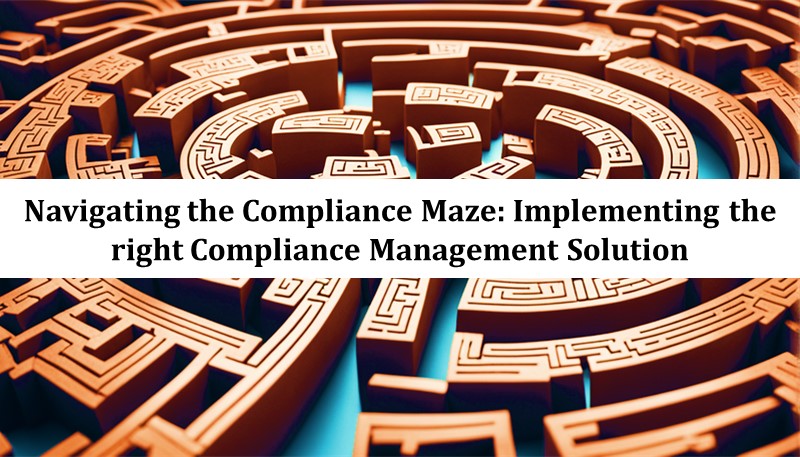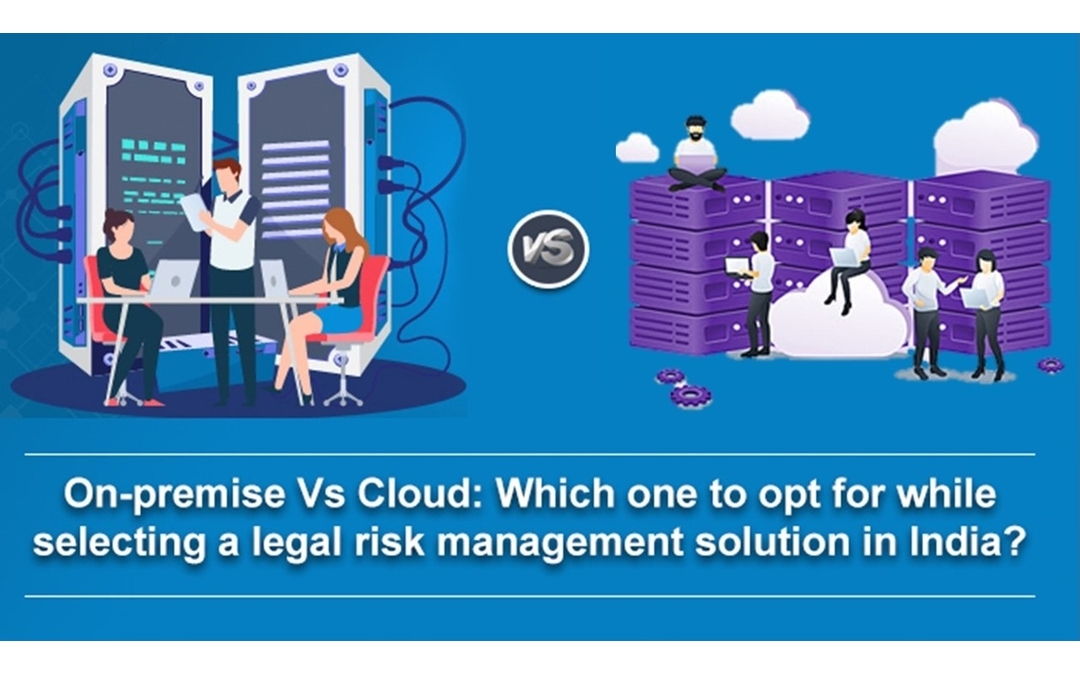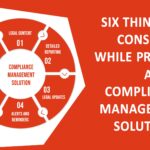The legal technology landscape has evolved significantly over the past 15 years, with numerous compliance management solutions (CMS) emerging in the Indian market. To successfully implement a CMS, organizations must carefully consider several factors. Some of the key aspects that must be looked at include:
- Business Requirements Document: Before even embarking on the partner selection process, it is essential to create a comprehensive business requirements document (BRD) that clearly outlines the organization’s compliance pain points and objectives.
- Management Buy-In: Obtaining buy-in from senior management is crucial for the successful implementation of a CMS. Their support will ensure that the project receives the necessary resources and attention, fostering a culture of compliance from the top down.
- Complete Compliance Coverage: A comprehensive CMS should encompass all applicable laws and regulations relevant to the organization’s operations. The CMS provider should demonstrate expertise in identifying and understanding these laws, ensuring that the organization remains compliant with all regulatory requirements.
- Simple yet Precise Language: The language used within the CMS should be easily understandable by all stakeholders involved in compliance activities but at the same time should effectively convey what is expected out of the compliance stakeholder.
- Proactive Approach to Regulatory Changes: Another significant aspect to consider is whether the CMS provider couples their expertise with the committed efforts to stay abreast of the evolving laws. A system that is not only comprehensive but at the same time also dynamic and constantly works to match the ever-changing legal frameworks is essential for organisations to stay compliant over time in the rapidly changing legal environment.
- Customization Capabilities: A successful CMS should be adaptable to the unique needs and workflows of the organization. The CMS provider should be willing to customize their solution to cater to the organization’s specific need for the compliance processes and risk profiles.
- User-Friendly Interface: The CMS should be user-friendly and intuitive, enabling seamless adoption by employees across various departments, such as HR, Admin, and Finance. A user-friendly interface will facilitate the integration of compliance into daily operations and not feel like an added burden to the stakeholders.
- Change Management and Communication: Effective change management is essential for successful CMS implementation. Clear and consistent communication throughout the deployment process will help address any concerns or challenges that may arise, fostering a culture of acceptance and adoption.
Implementation and Deployment Management
Successful CMS implementation extends beyond the initial setup and configuration. Effective implementation and deployment management ensures that the CMS is integrated into the organisation in a smooth manner. Some of the aspects to keep in mind at the time of implementation of a CMS include:
- Phased Implementation: A phased implementation approach allows for a gradual rollout of the CMS, enabling the users to adapt the new compliance solution and allowing the organization to identify and address any issues that may arise before expanding its use across the entire organization.
- Cross-Functional Teams: Having cross-functional teams involving representatives from various departments for coordinating the deployment will ensure that all stakeholders have a voice in the implementation process and that their specific concerns are addressed.
- Periodic Checks and Progress Tracking: Regular progress checks and stakeholder meetings are essential to monitor the implementation’s progress, identify any roadblocks, and make necessary adjustments to ensure the project stays on track.
- Clearly Defined Goals and Deliverables: Establishing clear and measurable goals and deliverables will provide a framework for tracking progress and celebrating milestones. This will help maintain focus and motivation throughout the implementation process end ensure stakeholders have a plan and a clear line of sight where they stand on their journey to implement to CMS.
- Continuous Communication: Maintaining open and transparent communication channels with all stakeholders is crucial throughout the implementation and post-implementation phases. This will foster trust, address concerns, and ensure a smooth transition to the new CMS.
- Contingency Planning and Flexibility: Anticipating potential challenges and developing contingency plans will enable the organization to adapt and respond effectively to any unforeseen issues that may arise during implementation.
- Time Allocation and User Acceptance: Implementing a CMS requires a dedicated investment of time and resources. Organizations must ensure that adequate time is allocated for user training and adoption to ensure the successful integration of the CMS into their daily operations.
Post-Implementation Requirements or KPIs
Effective post-implementation deployment management requires the establishment of clear requirements and key performance indicators (KPIs) to assess the compliance management system’s performance and impact on the organization’s compliance posture. These requirements and KPIs should focus on aspects such as:
- Responsive Support: The CMS provider should offer prompt and reliable support to address any technical or usage issues that may arise after implementation. This support should be accessible through multiple channels and should offer timely and effective resolution of problems.
- Regular Regulatory Updates: The CMS provider should maintain a commitment to providing regular and accurate updates on changes in applicable laws and regulations. This ongoing support will ensure that the organization remains compliant in an evolving regulatory environment.
- Compliance Culture Promotion: Fostering a strong culture of compliance within the organization is crucial for long-term success. The CMS provider should additionally help the customer provide resources and guidance to help organizations promote compliance awareness and engagement among employees.
- Accurate Reporting: The CMS should generate accurate and comprehensive compliance reports that provide clear visibility into the organization’s compliance status. This data will be invaluable in identifying areas for improvement and making informed decisions to enhance compliance.
While we have shared a few checklists to identify and implement an effective CMS at the organisational level, the complex and advancing regulatory landscape makes it more challenging than it may seem. Therefore, selecting the right compliance management partner is a crucial first step.
At Lexplosion, with our diverse experience in the legal compliance industry and our comprehensive and advanced compliance solutions we help you take your first steps to managing compliances seamlessly and enable you to navigate through the baffling maze of legal compliance. We integrate our deep expertise, and commitment to client success with our technological prowess to bring to you Lexplosion’s unique compliance management software, “Komrisk”. Komrisk provides a centralized platform for managing all aspects of compliance, from identifying and monitoring legal obligations to automating compliance tasks and generating exhaustive compliance reports.
With Komrisk, organizations can gain real-time visibility into their compliance status, proactively address potential risks, and ensure adherence to industry regulations. While our solution takes care of the ongoing compliance needs of organisations, we go beyond our role of a provider of a software solution, and remain committed to providing personalized support, guidance, and training to help organizations effectively implement and utilize Komrisk, ensuring that the solution aligns with their specific compliance needs and objectives. We strive to empower organizations to effectively manage compliance risks, enhance their regulatory posture, and achieve sustainable compliance growth. Embrace Lexplosion as your trusted compliance partner and confidently navigate the compliance maze to achieve compliance excellence.
You can also check out what our esteemed clients and experts in the field of compliance management, Aparna Chablani (DP World), Rashmi Chendvankar (CitiusTech), and Sanjeev Shrivastav (Novartis India) has to share on implementing the right compliance management solution – “What they don’t tell you about setting up a compliance management tool: The initial customer experience”.
Written by: Saikat Mondal, Mehreen Bushra Shafi
Co-authored by: Koushik Sinha
Disclaimer
All material included in this blog is for informational purposes only and does not purport to be or constitute legal or other advice. This blog should not be used as a substitute for specific legal advice. Professional legal advice should be obtained before taking or refraining from an action as a result of the contents of this blog. We exclude any liability (including without limitation that for negligence or for any damages of any kind) for the content of this blog. The views and opinions expressed in this blog are those of the author/(s) alone and do not necessarily reflect the official position of Lexplosion Solutions. We make no representations, warranties or undertakings about any of the information, content or materials provided in this blog (including, without limitation, any as to quality, accuracy, completeness or reliability). All the contents of this blog, including the design, text, graphics, their selection and arrangement are the intellectual property of Lexplosion Solutions Private Limited and/or its licensors.
ALL RIGHTS RESERVED, and all moral rights are asserted and reserved.





